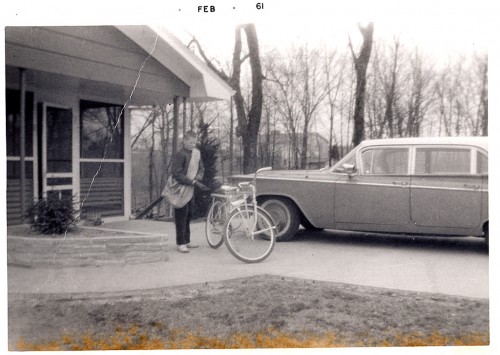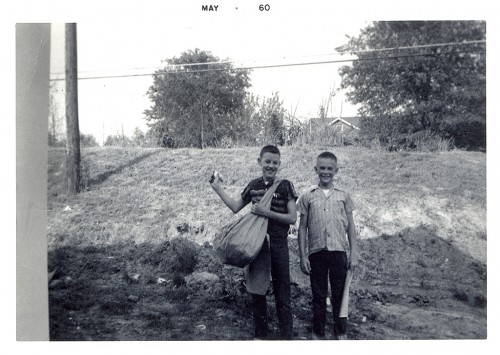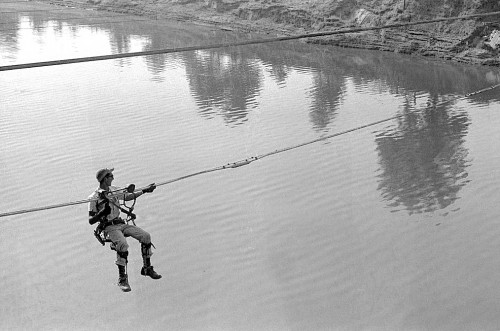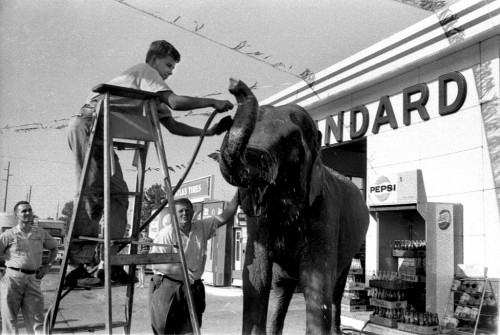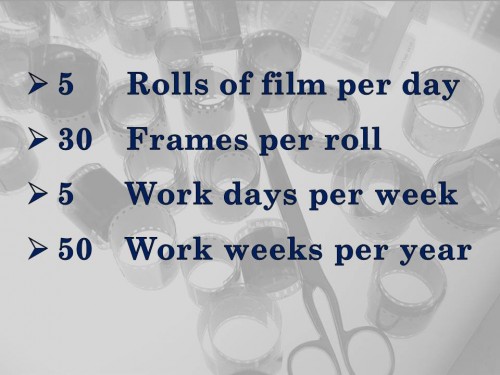 I was trying to explain newspaper photography to a group in Altenburg Tuesday night. I shared with them some stats I had uncovered while working on my operating budget in the mid-80s. I was trying to figure out how much to budget for film, paper, chemicals and travel for each photographer each month and annually. For reasons you’ll see below, I didn’t share ALL of my findings with management.
I was trying to explain newspaper photography to a group in Altenburg Tuesday night. I shared with them some stats I had uncovered while working on my operating budget in the mid-80s. I was trying to figure out how much to budget for film, paper, chemicals and travel for each photographer each month and annually. For reasons you’ll see below, I didn’t share ALL of my findings with management.
The average photographer shot about five rolls of film a day; each roll contained about 30 frames; there were five work days in a week, and we gave everybody two weeks a year for vacation.
37,500 pictures a year
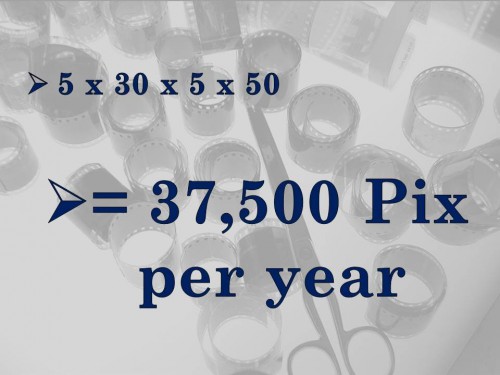 So, if you multiply those numbers: 5 x 30 x 5 x 50, you get 37,500 pictures a year.
So, if you multiply those numbers: 5 x 30 x 5 x 50, you get 37,500 pictures a year.
1969 Nikon F body
 This is the top of my 1969 Nikon F camera body. I called it my “crash camera” because it was on my lap for every airplane takeoff and landing, “just in case.” It was the non-automatic workhorse that I used so much the black coating has been worn down to the brass. I fell off a truck covering a flood once and both of us went underwater. The F body survived better than I did: IT wasn’t embarrassed and it still worked perfectly when it dried out.
This is the top of my 1969 Nikon F camera body. I called it my “crash camera” because it was on my lap for every airplane takeoff and landing, “just in case.” It was the non-automatic workhorse that I used so much the black coating has been worn down to the brass. I fell off a truck covering a flood once and both of us went underwater. The F body survived better than I did: IT wasn’t embarrassed and it still worked perfectly when it dried out.
The round dial with numbers running from 1 to 1000 is the shutter speed dial. The numbers represent fractions of a second from 1/1 second to 1/1000 of a second. Each number is either half or twice the number on either side of it. Let’s say that the average exposure is 1/125 of a second.
Math Question
 So, what do you get if you divide 37,500 pictures by 1/125 of a second?
So, what do you get if you divide 37,500 pictures by 1/125 of a second?
Math Answer
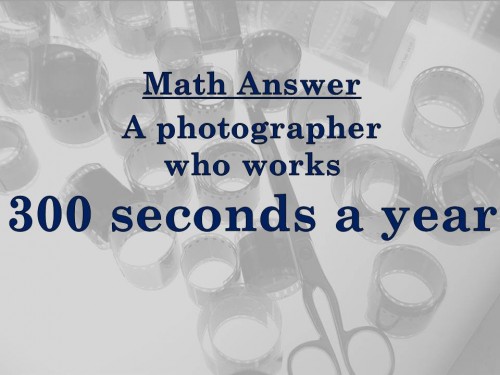 You discover that the average photographer on my staff worked about 300 seconds a year. At 1985 pay scales, that comes to about $69.33 per second. That’s a great gig if you can get it. See why this wasn’t a number I passed on to management? They already thought we were overpaid.
You discover that the average photographer on my staff worked about 300 seconds a year. At 1985 pay scales, that comes to about $69.33 per second. That’s a great gig if you can get it. See why this wasn’t a number I passed on to management? They already thought we were overpaid.
7,199,700 seconds a year
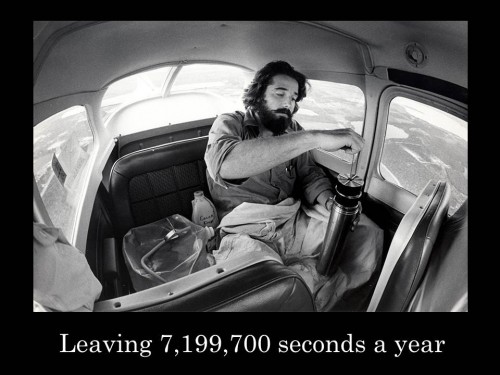 Now, if you ask lab tech Bob Wiley, who is doing a portable color film run in the back of an airplane about a mile up in the air, he’d say that left 7,199,700 seconds a year for the photographers to whine to the lab techs about how hard they were working.
Now, if you ask lab tech Bob Wiley, who is doing a portable color film run in the back of an airplane about a mile up in the air, he’d say that left 7,199,700 seconds a year for the photographers to whine to the lab techs about how hard they were working.
Fred Lynch says he works longer
Missourian photographer Fred Lynch flattered me by coming up for my preview presentation. He said in a comment to yesterday’s story that “That was before you retired. We work much longer these days with digital cameras.”
I’ll concede that by the mid-90s, when we were shooting many more of our assignments in color, photographers probably doubled their film consumption. We used color slide film because it gave better reproduction than print film. Our engravers would argue that the whites in a color print could be only as bright as the paper it was printed on, but the whites in a slide were as bright as the light source. The catch is that your exposure was much more critical with slide film, so the shooters bracketed their exposures to make sure they hit it right on target. That took more film. In addition, they generally backed up the color with black and white.
How much film you shot was as much a matter of how much film you could process as anything else. If we sent four photographers to cover an event involving a portable color run, we would tell them they were limited to eight to 12 rolls total for the four. They could shoot as much as they wanted to, but the tank would only hold so many rolls. They had to decide individually and collectively which rolls adding up to tank capacity would be processed.
Shooting my shoes
Because the film would arrive back at the office long before the photographers would, we used some tricks to give the photo editor a clue who shot the roll and when. At a football game, for example, I would take a picture of my shoes and a picture of the scoreboard at the front of every roll. We also used “twin tags,” two waterproof sticky numbered labels; one would go on the end of the film, the other on the film envelope that held the rolls.
In the digital world, that’s not an issue. Since there is no processing involved on the front end, it becomes a matter of how many images do you have time to look through to find the best one? If you’re on deadline, you don’t have the luxury of being able to eyeball thousands of images.
With all due respect to Fred, I’ll agree that photographers today shoot way more than 37,500 images a year. I’ll also say that the ability to essentially record a ‘movie’ of an event by holding down the shutter button makes for sloppier shooting. I know that I shot differently when I was sent to a football game with four sheets of 4×5 film and five flashbulbs than when I could shoot four 36-exposure rolls of 35-mm film. When I documented the CHS vs. Sikeston football game in the fall of 2010, I banged off 313 pictures with my digital Nikon D40 camera.
Calendars and books
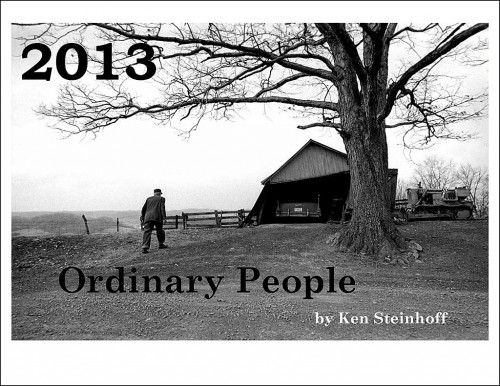 I have two calendars and two photo books available for sale at the Lutheran Heritage Center and Museum. They are $20 each. If you order more than one, the price for each additional copy drops to $15. Shipping and handling will run about $5 for a single copy (or as many as will fit in the mailer for that rate).
I have two calendars and two photo books available for sale at the Lutheran Heritage Center and Museum. They are $20 each. If you order more than one, the price for each additional copy drops to $15. Shipping and handling will run about $5 for a single copy (or as many as will fit in the mailer for that rate).
The 2013 Ordinary People calendar features photos taken in Missouri, Ohio and Florida, plus a shot of Queen Elizabeth II in the Bahamas. These are some of my favorite pictures.
Tower Rock
 There are a limited number of my Tower Rock: “A Demon that Devours Travelers” photo book left. If you were lucky enough to be able to climb The Rock when the river was low, this is a great souvenir.
There are a limited number of my Tower Rock: “A Demon that Devours Travelers” photo book left. If you were lucky enough to be able to climb The Rock when the river was low, this is a great souvenir.
Ordinary People
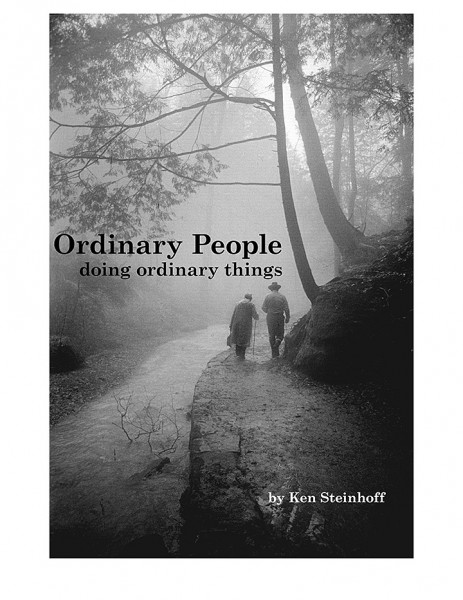 Ordinary People Doing Ordinary Things is a catalog of some of the pictures and layouts in my photo exhibit. It makes a great pairing with the Ordinary People calendar because it gives the stories behind the photos.
Ordinary People Doing Ordinary Things is a catalog of some of the pictures and layouts in my photo exhibit. It makes a great pairing with the Ordinary People calendar because it gives the stories behind the photos.
Trinity Lutheran Church
 The 2013 Trinity Lutheran Church calendar would be a great gift if you know someone with an interest in the 1867 Altenburg church.
The 2013 Trinity Lutheran Church calendar would be a great gift if you know someone with an interest in the 1867 Altenburg church.
How to order the publications
If you are in the area, I encourage you to drop in the museum. It’s free, interesting and has the friendliest staff and cleanest bathrooms you’ll every find. You can also order the publications by mail. They are $20 each. If you order more than one, the price for each additional copy drops to $15. Shipping and handling will run about $5 for a single copy (or as many as will fit in the mailer for that rate) if you can’t make it there in person.
Lutheran Heritage Center & Museum
P.O. Box 53
75 Church Street
Altenburg, Missouri 63732
Open Daily seven days a week: 10:00am – 4:00pm
Telephone: 573-824-6070
Email: info@altenburgmuseum.org

